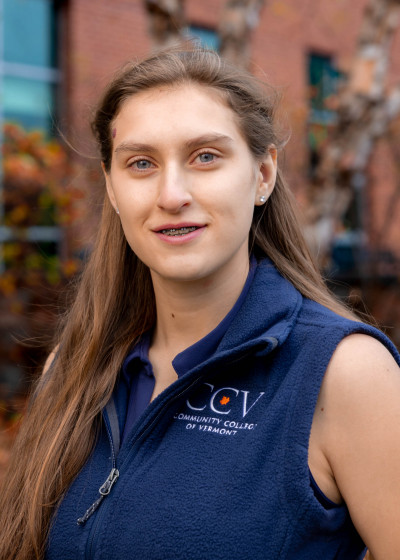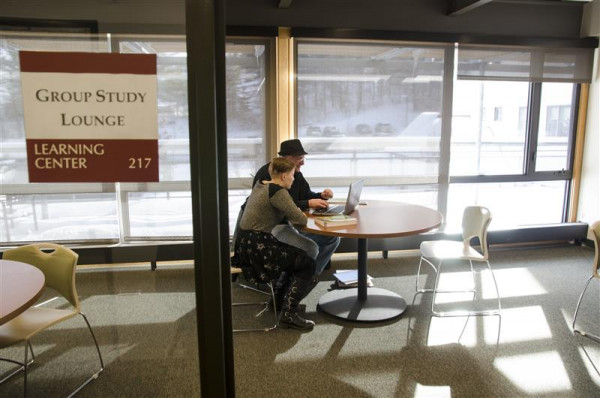We close opportunity gaps and strengthen rural communities by making postsecondary education and training the easy choice—especially for young Vermonters. We are committed to an approach that centers equity, takes the long view, and advances systems development and systemic change. We were the first supporting organization of the Vermont Community Foundation in 1995; thirty years later, we continue to benefit from our close affiliation.
What we are working on:
Over the years, our funding has helped launch and inform public policy and funding—from community college in correctional facilities to Vermont's Critical Occupations framework. We’re now focused on three priority workforce development strategies:
- Teacher workforce development and diversification. Teaching is the occupation associated with the greatest demand in Vermont’s Most Promising Jobs framework. We’ve made a multi-year commitment to prioritize this issue and are investing in several innovative approaches.
- Community college as an engine of mobility. Our decision to partner with the Vermont State Colleges (VSC) and the Community College of Vermont (CCV) specifically is strategic. Community college is an economic mobility engine. That’s especially true in Vermont, where associate degree graduates are the most likely in the country to achieve a positive ROI and where CCV serves the majority of Vermont college students—and low-income college students, and high school students accessing college courses—statewide. If we Vermonters believe that career-connected public postsecondary education drives economic mobility, how can we ensure that funding commensurately and adequately supports the institutions that serve the greatest number of Vermonters who are furthest from opportunity?
- “The Big Blur” between high school and college – With high school graduation rates and college continuation rates dropping, we encourage Vermont to embrace a reimagining of the last two years of high school and the first two years after high school in order to increase success for all. In Vermont, we celebrate all flexible pathways that spark hope on students’ journeys to and through high school graduation and we’re encouraged to see significant strides in equitable enrollment and success.

Accelerated pathways like the Free Degree Promise that builds on the state’s Early College program is making college the easy choice for young people furthest from opportunity. Students on the pathway are graduating at twice the rate and in half the time as community college students nationally, and the Promise was extended in fall 2025 to Vermont's high school classes of 2027 and 2028.
Our emerging areas of grantmaking interest include service-to-career pathways and professional coordination and learning for Vermont’s work-based learning coordinators. To learn more about these and other funding opportunities, visit our Grants page.
How we approach this work:
We take a relational approach rooted in reliable data. Supporting youth success and career pathways requires a deep, current understanding of their needs and aspirations. That’s why we invest in research, update Vermont’s Most Promising Jobs list every two years, conduct empathy interviews, survey young people on how they want adults to engage with them, and hire program participants as interns.
Here’s what young people are telling us about how they want adults to show up in those conversations:
- Share Your Opinions and Experiences. We want your stories—what worked, what didn’t, what surprised you. Be honest, even if it's hard to hear. Just don’t pressure us or pretend there’s one “right” answer or path.
- Be Real About Money. Money matters. We want to be prepared to live independently and succeed financially. Be honest about salaries, how to manage money, and the cost of education options after high school.
- Give Us More Hands-On Exposure to Careers. Let us try things. Internships, job shadows, guest speakers, clubs, and real-life experiences make jobs feel real and help us figure out what we like. Give us more access and visibility.
- Help Us Discover and Follow Our Interests. Ask what we're curious about and what we care about. Support our exploration of what interests us and where we might thrive. Give us space to change our mind.
- Talk Honestly About Trade-Offs and Quality of Life. Show us how to weigh salary vs. lifestyle. Don’t just say “follow your dreams”—be realistic. Help us understand work-life balance, stress levels, and what different career paths really mean.
- Talk With Us, Not At Us. Tone matters: we want respect, empathy, humor, and patience, especially if we’re unsure. Make us feel capable, not overwhelmed. Use words we understand and don’t talk over us.
- Focus on the Practical Side of Career Paths. Tell us how to actually get jobs—during or after college, how to search, apply, network. Give us info on what’s out there and how to get there from here.
- Help Us Take One Next Step. Give us multiple options. Explain how each step opens doors to other steps, and how it could create paths to our goals.

A young peer tutor supports a veteran student in CCV's Learning Lounge. Photo credit: Community College of Vermont.
Latest News

Free Degree Promise Extended to Current 10th and 11th Graders
Read More about "Free Degree Promise Extended to Current 10th and 11th Graders"
Hope for Vermont’s transition-age youth: Lessons from Gone Guys
Read More about "Hope for Vermont’s transition-age youth: Lessons from Gone Guys"
